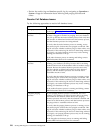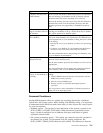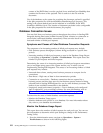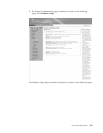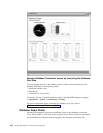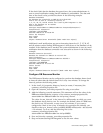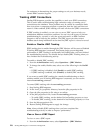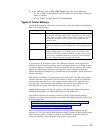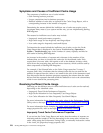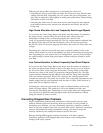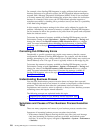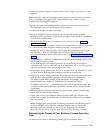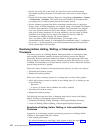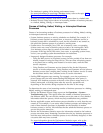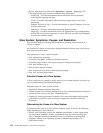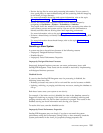Symptoms and Causes of Inefficient Cache Usage
The symptoms of inefficient use of cache include:
v Slow-running business processes
v Longer completion time for business processes
v Reduced number of cache hits, as reported in the Cache Usage Report, with a
corresponding increase in the number of requests.
Determining the reasons behind the inefficient use of cache may require you to
investigate many areas of your system and the way you are implementing Sterling
B2B Integrator.
The reasons for inefficient use of cache may include:
v Improperly tuned performance properties
v High cache usage for less frequently used large objects
v Low cache usage for frequently used small objects
To determine the reason behind the inefficient use of cache, review the Cache
Usage Report that is displayed in the System Troubleshooting (Operations >
System > Troubleshooter) page for the number of counts, requests, and hits for
each cache in Sterling B2B Integrator.
An increase in the number of requests and a decrease in the number of hits
indicates that you have to increase the cache size for the affected cache. Each
request that is not met with a hit requires a call to the database for data, which
slows down the processing time and uses more resources, which could be used by
other components of Sterling B2B Integrator.
For example, if the SchemaCache on the Cache Usage report has 5 counts, 5
requests, and 0 hits, it indicates that the schema cache may be too small for the
number of requests from the cache or too small for the size of the documents used.
Zero hits means that the business processes requesting the schema from the cache
did not find the requested data and called the database to receive the schema data,
which in turn slowed the processing time.
Resolving Inefficient Cache Usage
Following are the different ways in which inefficient use of cache can be resolved,
depending on the identified cause:
v Improperly Tuned Cache Performance Properties
v High Cache Allocation for Less Frequently Used Large Objects
v Low Cache Allocation for More Frequently Used Small Objects
For more information about changing the cache values in the Performance Tuning
Utility, refer to the topic Viewing or Editing Performance Configuration Settings.
For more information about changing the cache values manually using the
noapp.properties file, refer to the topic Manual Performance Tuning.
Improperly Tuned Cache Performance Properties
If you review the Cache Usage Report and notice that the number of requests are
increasing and the number of hits are decreasing for the same cache, increase the
cache values using the Performance Tuning Utility, or manually increase the values
in the install_dir/properties/noapp.properties file.
228 Sterling B2B Integrator: Performance Management



